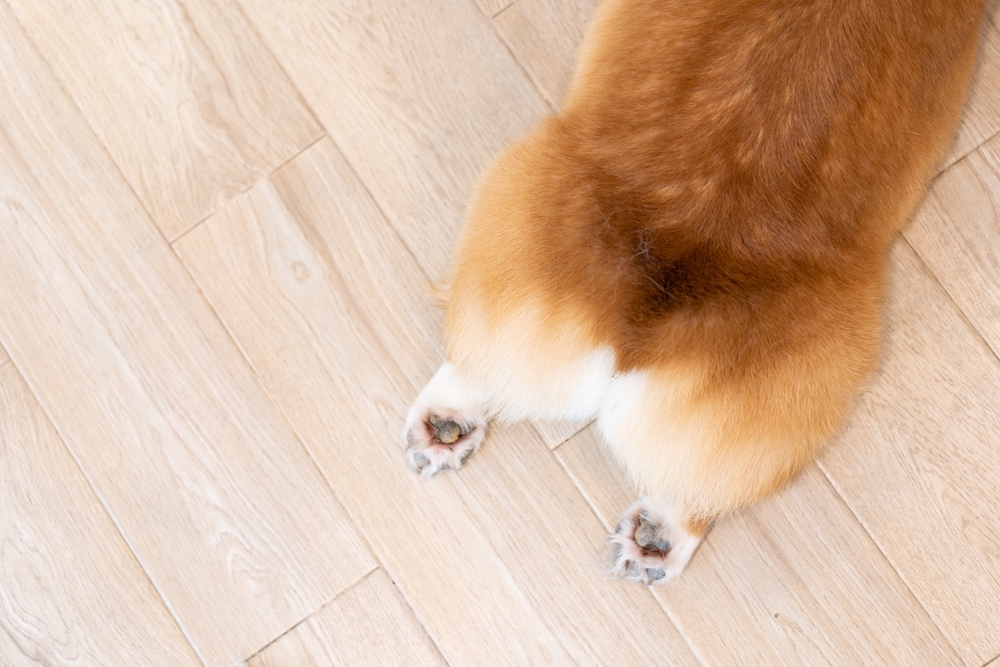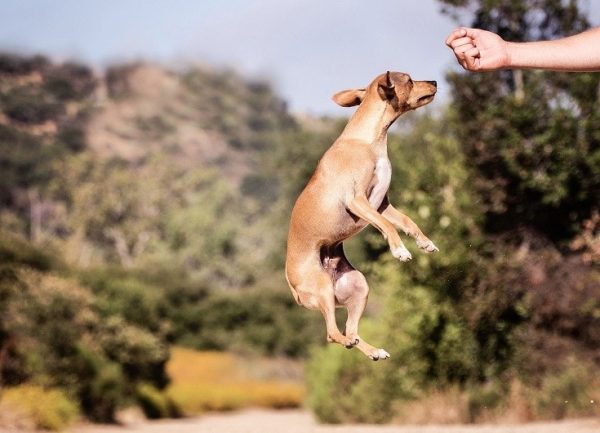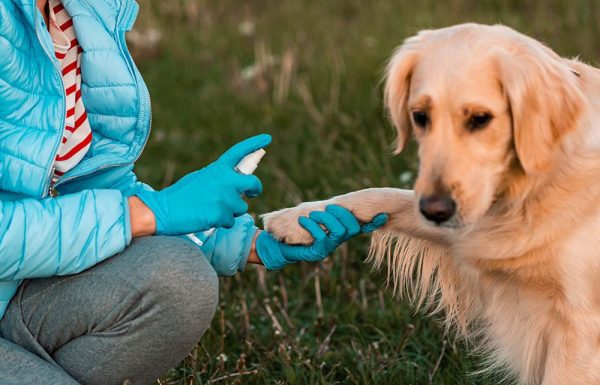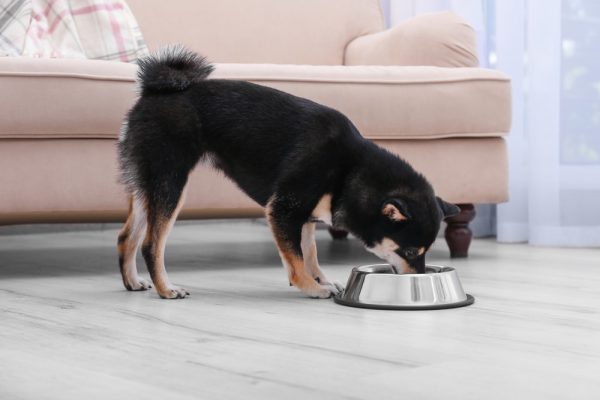Who wouldn’t like getting scratched in their favorite spot? When you are scratching a dog’s hindquarters, it probably just feels so good to them! If you wonder exactly what makes that spot so unique, we will go over a few reasons your dog might love the way it feels.

The 3 Common Reasons Why Dogs Like Butt Scratches
1. Butt Scratches Feel Good
To put it plainly, when you scratch at the base of your dog’s tail, it simply feels good. It is an area that is extremely sensitive because it is full of nerve endings. In fact, your dog might prefer butt scratches to all other types of petting.
If you look at the data, it’s actually quite scientific. Your dog’s tail is filled with tons of nerve endings. This area can be susceptible, giving your dog all those feel-good emotions.
It can feel good for different reasons. Most of the time, it’s just a really nice spot to have rubbed down. However, it can signal that something else is going on in the area, making it kind of itchy. Therefore, when you scratch the area, they are experiencing relief.
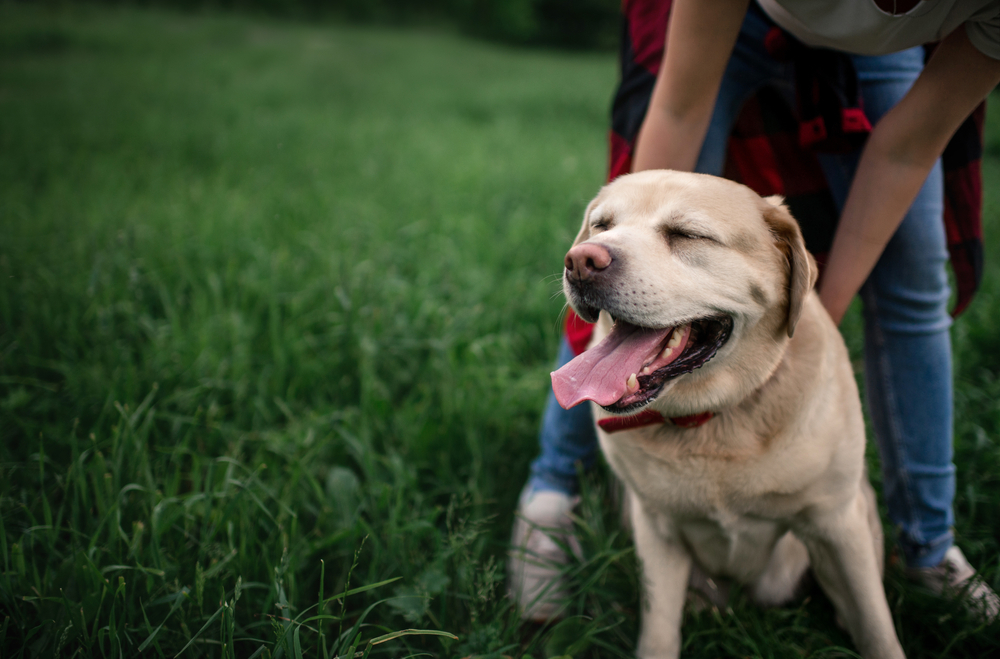
2. It’s a Hard Area for Your Dog to Reach
Due to the way a dog’s body is built, their butt is a hard spot for them to reach on their own. It’s like when you try to scratch certain spots on your back, and you can’t exactly reach them. So, maybe they have an itch back there that they can’t normally reach, and scratching it for them just feels good and offers some relief from their itch.
3. Something Else Might Be Going On
If you know that your dog likes butt scratches on a normal day, but they really seem to be loving the attention right now, something else might be to blame. Look at these different possibilities below.
- Fleas
Have you recently gotten your dog treated for fleas? These timelines creep up on everybody, and it seems like fleas just worsen yearly. Many of them become resistant to the same old flea treatments, making them very difficult to get rid of.
If your dog picks up fleas from outside, another canine, or an unknown source, they tend to collect at the base of the tail. You might notice your dog digging in this area, even pulling out its fur and breaking open the skin.
So, if your dog is asking for more butt scratches, and you take a look and think your pet might have fleas, it’s time to get the treatment. Fleas can be very difficult to get rid of depending on the severity of the infestation. It is likely that you will have to treat your home for fleas to completely eliminate all life cycles.

- Allergies
Allergies can really make some itchy skin! If your dog is having a little bit of an issue with allergy-related hot spots or skin irritation, it might feel really good if you are scratching near the tail.
Allergies can crop up for all sorts of reasons. They can be food or environment related. Because it’s often difficult to diagnose, your dog might have to go through rigorous testing to identify the underlying issue. Once your dog is diagnosed, you can avoid the trigger or eliminate it from the diet. Signs of allergies in dogs are pretty similar to those of humans, with some key differences.
- Itching
- Frequent infection
- Dryness
- Redness of the skin
- Chewing paw pads
- Diarrhea
- Lethargy
If you suspect your dog has allergies, it is important to follow up with routine vet care so they can get a proper diagnosis and treatment.
- Lack of Hydration
You might know what it’s like to get flaky skin in the winter time when the air is very stagnant and dry. Dogs can experience the same thing. Some dogs might need a little extra motivation to get the right hydration in their diet.
If you don’t feel like your dog drinks enough, there are certain things you can do to make sure they’re incorporating more liquids.
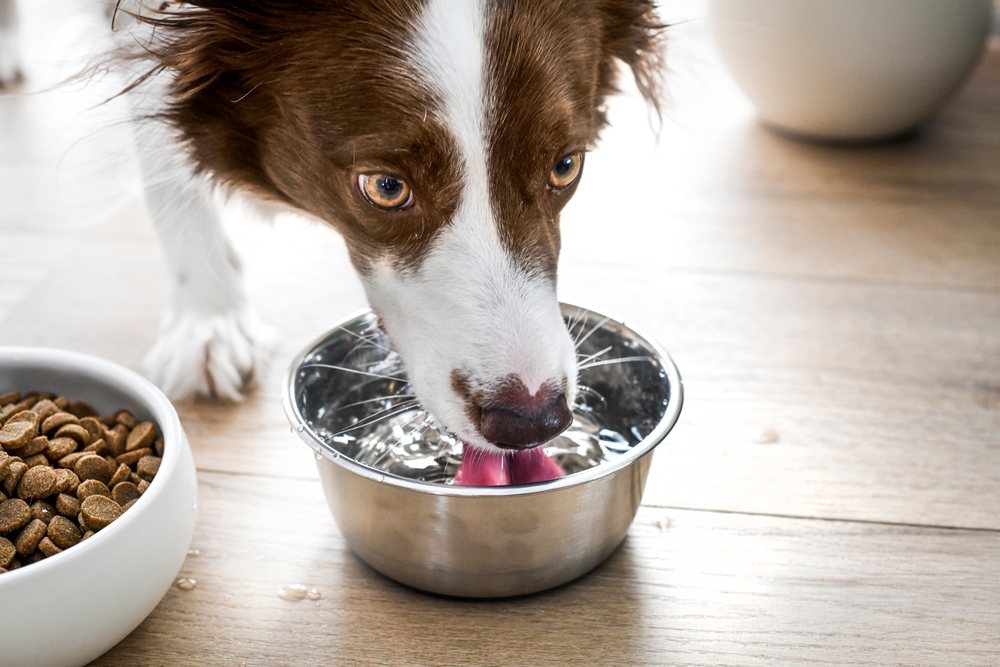
You can help your dog by:
Feeding Wet Canned Food
If your dog just won’t drink enough, eating all that dry kibble is probably really not helping the matter. Even if it’s just temporarily, you can try incorporating wet canned food into your dog’s overall diet. If you don’t want to feed too much wet canned food, you can always just add a small portion in the morning or evening.
Add Broths to Kibble
Bone broth is an exceptionally healthy and nutritious option for canines. They can benefit from it greatly for numerous reasons. There are also a number of commercial broths that incorporate different flavors, such as beef, chicken, and pork.
Buy a Fountain
Get rid of that boring old stagnant water dish. Instead, get your dog their very own water fountain. The natural flow of water will encourage a dog to drink, therefore this invitation inspires them to do the same.
There are tons of different options on the market these days. It seems that you can get as fancy or basic as you want. However, we have to warn against buying very cheap models.
If you do, you risk poor quality, which can lead to issues like leaking or premature breaking. Always research the product you plan to buy carefully to ensure customer satisfaction. This reduces the risk of lengthy returns or unpleasant buying experiences. [/su_list]

Dog Scratch Reflex
You might be more familiar with dog scratch reflex than you think. It seems that some dogs do it more than others. But when you find their sweet spot, you certainly know it when they start kicking vigorously in the repetitive motion.
If you get your dog in just the right spot at the base of the tail, it might start to kick its leg vigorously. This is a surefire sign that you found the sweet spot and that the dog is quite enjoying itself.


Summary
Now you understand a little bit more about dogs and butt scratches. We know they love them! Most of the time, they react in the way they do because it just feels so darn good! However, there might be a little more going on.
If you notice any peculiar symptoms or they’re behaving a little differently than normal, it might be time to make an appointment with your vet so you can see if there’s something else going on.
If you need to speak with a vet but can't get to one, head over to PangoVet. It's an online service where you can talk to a vet online and get the personalized advice you need for your pet — all at an affordable price!
See also:
- Fleas & Hot Spots on Dogs: Vet-Verified Causes, Signs & Treatment
- Why Do Dogs Scratch Themselves? 8 Vet-Reviewed Reasons
Featured Image Credit: Wongsakorn Napaeng, Shutterstock
